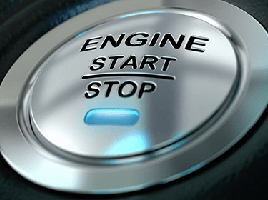ERP software plays a key role in many industries. When it comes to lean manufacturing, importance of this role is much bigger.
Let’s take a look at what can be done to help by using ERP in lean manufacturing environments.

No. 1 – Transport Waste
Transport waste takes place when you move items or materials from one area to another without adding value to the goods customers will eventually receive. It occupies an operator’s skills, equipment, and vehicles without contributing to productive work.
To combat transport waste in your ERP, you’ll want to access tools that help regulate production and logistics, so there’s no needless movement of goods from one location to another. You’ll also want a system that lets you schedule and monitor the use of your transportation equipment and rolling inventory.
ERP can also help with going lean by giving instant visibility into inventory-level data. If you’re unable to see inventory levels, trends, and locations in your current ERP, there’s a good chance transport waste is at least partially to blame.
No. 2 – Inventory Waste
Raw materials, goods in production, and finished inventory sitting on shelves doesn’t do any good for your customers. The longer any of your materials sits, whether finished or not, the longer it takes for that good to produce a profit, therefore contributing to inventory waste.
Inventory waste is often a result of poor forecasting, bad production planning, and sub-optimal distribution practices. To overcome these challenges, the best ERP systems have built-in functionality for supporting just-in-time (JIT) manufacturing, ensuring that none of the means of production are ever in a state of non-movement. Functionality to look for includes tools that increase forecasting accuracy, set reorder points and min/max stock levels, and the availability of historical item data to track sales history.
No. 3 – Motion Waste
Waste of motion occurs when an individual or piece of equipment moves in any way that doesn’t add value to a product. Poor layout of a production facility causes employees to move in a way that wastes time and energy. Excessive wear and tear to machinery can also result from an inefficient layout, leading to further motion waste.
Powerful ERP platforms allow you to fine-tune your processes to incorporate production times, facilitating better distribution of equipment workload. They also provide the data context you need to work with the equipment suppliers, so you can ensure the machines you use are built and installed to work in the most efficient way possible.
No. 4 – Waiting
Any period of time where progress isn’t being made on an item can be considered waiting. Waiting happens on decisions, information, machinery, and more. Waiting typically occurs when staff members can’t make a decision because they lack information, departments aren’t in tune with each other, or production is halted by bottlenecks.
ERP can be used to eliminate the headaches of waiting by offering easy availability of pertinent data. If end users can quickly locate the information they need to reach a decision, there’s no need to wait on a response from someone else. Robust manufacturing ERP systems eliminate information bottlenecks, enabling quick decision making. As technology continues to improve, automation is becoming more and more widely used as well, further reducing those dreaded wait times.
No. 5 – Overproduction
Overproduction is often considered to be the worst of all the wastes, largely because it contributes to all other wastes and it obscures the need for improvement. Overproduction waste takes place when you manufacture more of an item than your customers need, or when it’s produced before it’s time to make a delivery. This happens as a result of bad supply chain management, procurement, and demand planning.
To counter this using your ERP, you’ll need visibility into your inventory, and enough control to align production, purchasing, and warehousing with your actual demand. You’ll want to use an ERP that acts as a single source of your company data across the entire supply chain. Having this visibility combined with accurate demand forecasting means manufacturers don’t need to err on the side of caution and overproduce.
No. 6 – Over-processing
Over-processing creates waste because you put more work into a product than is actually valued by a customer. It might look good to paint the inside of that part that will never actually see the light of day, but if your customer doesn’t need it, you’re wasting time and energy. Over-processing is usually caused by a lack of standard operating procedures.
To minimize over-processing using your ERP, you’ll want to use tools that reduce the number of human touch points during the processing stages. For example, instead of having a quote or spec order created by your sales team manually re-entered as a BOM, an ERP focused on reducing over-processing will let you turn the quote into a BOM immediately with one click of a button (or even better, it will turn the quote into a BOM automatically!). The right ERP will also allow the monitoring of productions to ensure that your company is hitting the right KPIs and customer goals.
No. 7 – Defects
Defects waste time and materials on products that don’t live up to quality standards. They can lead to negative customer experiences, putting a strain on relationships or even result in lost customers. Defects also waste physical means of production.
Counteracting defects in ERP is a bit tougher than handling the other types of wastes, but good manufacturing-based ERP platforms provide you with the control to pinpoint deviations in quality as soon as they appear, preventing the production of defective goods. The sooner these deviations in quality are discovered, the sooner an engineer can investigate the issue before it causes extensive downtime or damaged product.
Work With ERP, Not Against it
Using ERP to eliminate waste is possible. If your ERP has the right tools, you’ll be able to take the steps necessary to improve your operations’ effectiveness. With a little know-how and effort, your business can actively fight sources of unnecessary waste by using ERP software and trimming down on excess or outdated processes that may have been holding you back without your knowing.







